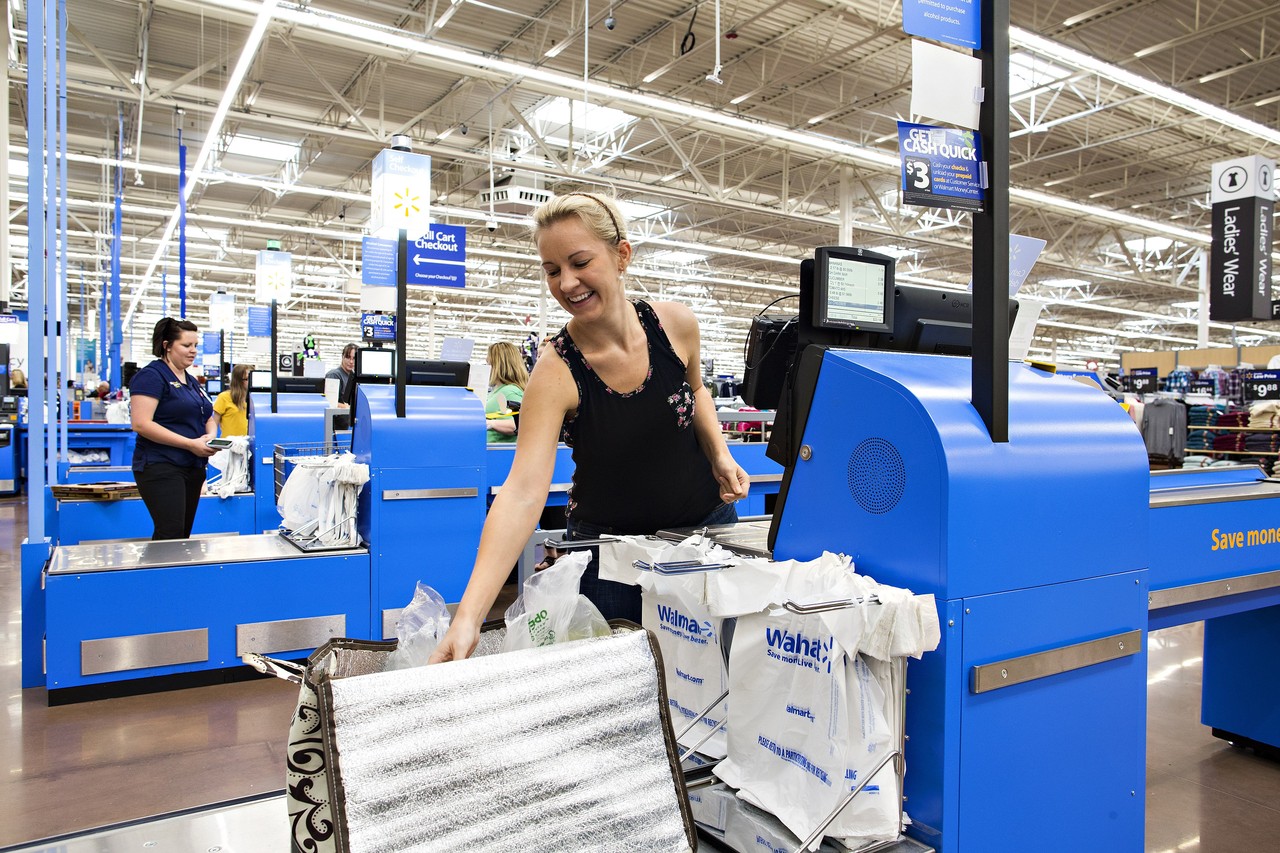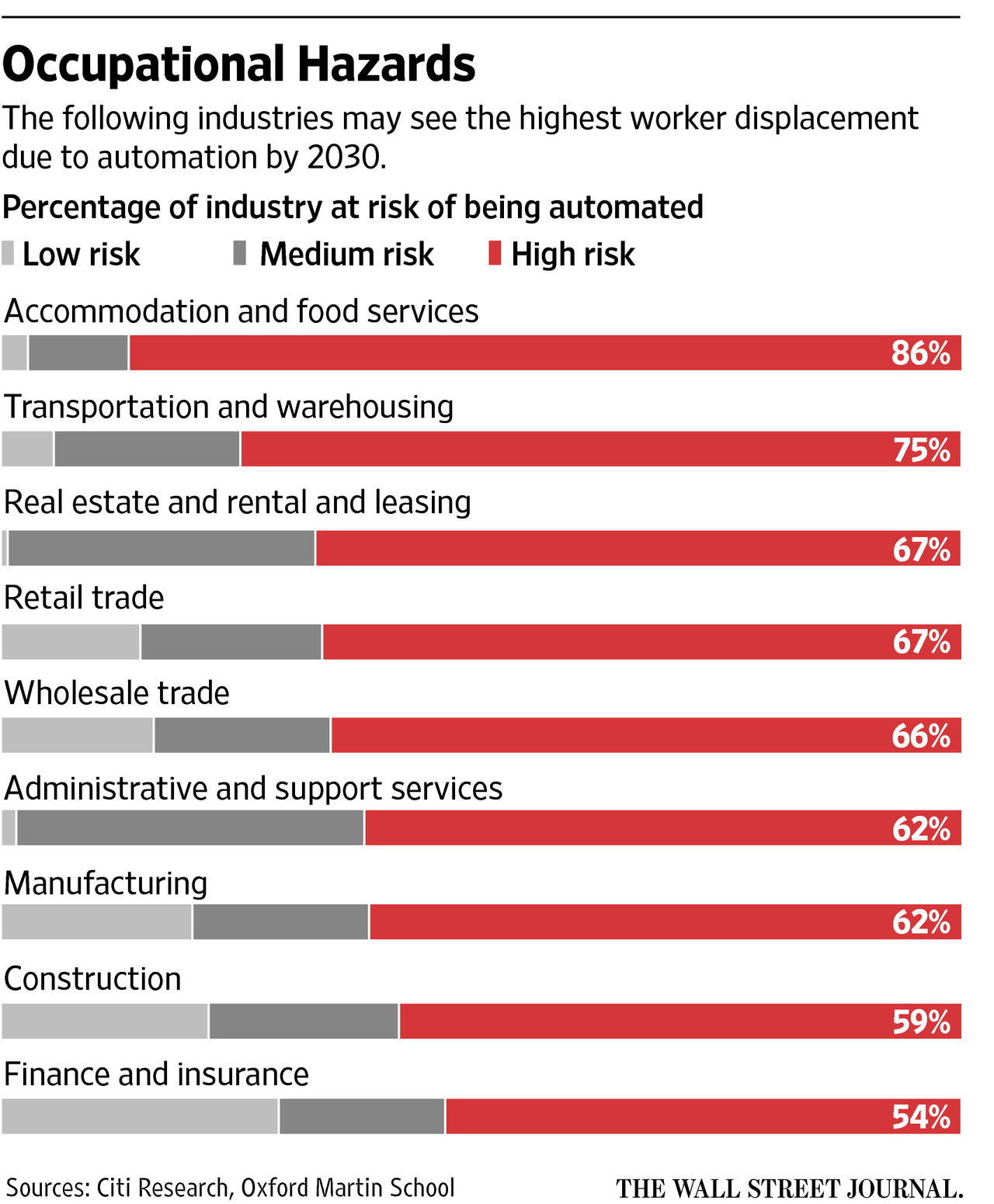Wal-Mart and other large retail stores under pressure from competition from Amazon are turning to technology for the performance of mechanical work

Last August, 55-year-old
Wal-Mart employee discovered that her job was taken by a robot. Her task was to count cash and track down errors in the books of the store, which she did in the back room of the office wing with no windows. She earned $ 13 per hour.
And now the Wal-Mart stores have switched to using massive gray aggregates, counting eight bills per second and 3000 coins per minute. The Cash360 machine digitally deposits money in a bank account, and Wal-Mart earns its interest faster than the cash collector’s car would carry. The machine uses the software to predict the required amount of cash on a particular day to reduce the storage of bills.
“They believe that this way of processing money will be more efficient,” said an employee who had worked in the store for ten years.
Now, almost all of the 4,700 Wal-Mart stores in the US have Cash360 handsets, and they crowd out thousands of workers. Most of the workers moved from this job to a position on the sales floor, as the store representative states. More than 500 people left the company. The store accountant, who was replaced last August, now stands at the entrance and welcomes customers, which still earns $ 13 per hour.
"Attendants and customer care staff will remain in place," says Judith McKenna, chief operating officer for Wal-Mart in the United States. But she adds: “Technology is developing in a very interesting way, and the roles of workers are constantly changing and shifting.”
Purchases are gradually becoming online, wages are rising, and retail sales are declining — this formula puts pressure on all retailers, starting with Wal-Mart and ending with Tiffany, and forces them to look for technologies that can do mechanical work for retailers or completely replace them.
Amazon.com is intruding into traditional retail and plans to buy Whole Foods Market Inc.'s grocery store chain, and Wal-Mart, along with other major retailers, is under pressure to make them invest in business to keep up.
Economists say many retail jobs are ripe for automation. According to a 2015 Citi Research report, the risk is high that two thirds of jobs in US retail will disappear by 2030.
 Cash360 device
Cash360 deviceSelf-service cash registers can replace cashiers. Autonomous mobile devices may be engaged in the delivery of orders and inventory of the warehouse. Even more complex tasks, such as advice on what kind of toy or shirt it is best to buy for a client, can be processed by a computer that has access to the client’s purchase history - just like it does online today.
“The main indicator for suitability to automation is the routine of the operation,” says Ibrahim Rahbari, an economist at Citi Research. “The big problem is that a decent percentage of working people are engaged in retail.”
In the US, almost 16 million people, or 11% of those who do not work on farms, are employed in the retail industry, mainly as cashiers or salespeople. This industry has overshadowed the shrinking real production sector, which before it was the largest employer, 15 years ago. Now, with the closing of stores, jobs in retail are disappearing. Since January, 71,000 retail jobs have disappeared in the US economy, according to the Labor Commission.
“The disappearance of jobs in retail, occurring on a larger scale - and this seems very likely in the long run - will make the labor market even less attractive for working people who already have little opportunity to get a stable and well-paid job,” says David Otor, an economist from MIT.
Earlier this year, Beverly Henderson earned less money and lost the medical bonuses when she left Wal-Mart on a wave of changes in office work. “I'm 59 years old,” she said. - I have never worked on the trading floor. I always worked in the office, and I did not intend to go to the hall. ”
 In these industries, the greatest risk of robots replacing workers by 2030 is predicted.
In these industries, the greatest risk of robots replacing workers by 2030 is predicted.
In the first place - hotels and catering. Next come the transportation and warehouse, rental of real estate, retail, wholesale, administrative services and support services, manufacturing, construction. Close the list of financial services and insurance.She is now an office manager at a local business who cannot afford to give her the same benefits or salary of $ 16.75 per hour, which she received for 16 years while working at Wal-Mart.
“I would never leave Wal-Mart. They paid me well, ”said a Southport resident, pc. North Carolina.
At Wal-Mart, Henderson worked on invoices, and now this work is done by centralized technology.
Automation seeps into many retail areas. Tiffany uses machines to polish the simplest items, such as silver, during production. In Home Depot Inc. self-checkout offices appeared, and tests are carried out with additional hand-held scanners, thanks to which customers will be able to buy large items like lumber.
“We want to make it easier for the stores to free up our employees who can do the sales,” said Carol Tome, Chief Financial Officer of Home Depot, in an interview.
Wal-Mart has long been trying to improve the efficiency of its business, both in stores and inside an impressive supply chain. And although 1.5 million US residents work there, the number of store employees per square meter has decreased by 15% over ten years, according to an analysis done by the WSJ.
Some stores are experimenting with touch screens for self-returning products. Self-service cash registers are increasingly replacing conventional ones, as a person familiar with the company's strategy says.
Several patents from Wal-Mart offer options for using technology that improves service. One describes
a face recognition system that will track user dissatisfaction and adjust staffing accordingly. In hundreds of stores, jobs are changing in such a way as to support new services, such as issuing orders made via the Internet in grocery stores.
In two stores, Wal-Mart is testing a touchscreen system that shows customers the difference between devices, such as Internet-connected speakers and thermostats. “We don’t need an assistant to understand how it works, but it’s there, it serves and releases customers,” McKenna says.
Cash360 devices allow cashiers to process money for digital placement in a bank, scanning an employee's hand and recognizing a unique vein pattern.
The goal is not to reduce the number of retail workers, says Brian McCabe, president of a subsidiary of G4S PLC, who developed cash management systems in cooperation with Bank of America Corp. “We can optimize work,” he says. “And how a particular retail store uses this opportunity already depends on it.”